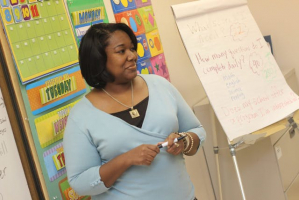Top 10 Expository Essay Topics for College Students and Samples
Navigating the realm of expository writing, college students are presented with a rich tapestry of topics to explore. Engaging in expository essays not only ... read more...sharpens analytical skills but also encourages thoughtful expression. Let's delve into diverse expository essay topics, unlocking the door to intellectual exploration and effective communication in the collegiate landscape.
-
Essay topic: The positive and negative effects of the Internet
Answer:
The Internet, a vast realm of information and connectivity, has become an integral part of our lives. However, like a double edged sword, its impact on us is a mix of positive and negative effects.
On the positive side, the Internet has revolutionized how we access information. With just a few clicks, a world of knowledge opens up, aiding students in research and expanding our understanding of diverse subjects. It serves as a virtual library, making information accessible to anyone with a connection.
Supporting this idea is the power of communication. The Internet has shrunk the world, connecting people across borders. Social media platforms enable friendships to flourish and families to stay connected, fostering a global sense of community. Additionally, online collaboration tools facilitate teamwork, making it easier to work with others regardless of geographical distances.
However, the Internet's impact isn't all positive. The negative effects come into play when it comes to excessive screen time. Spending too much time online can lead to physical and mental health issues. Eye strain, sleep disturbances, and a sedentary lifestyle are some consequences that may arise from prolonged Internet use.
On the darker side, the Internet poses risks to privacy and security. Personal information can be vulnerable to cyber threats, leading to identity theft and other malicious activities. Moreover, the rapid spread of misinformation on the Internet can contribute to the formation of false beliefs and the amplification of rumors.
In conclusion, the Internet is a powerful tool that has transformed our world in numerous ways. Its positive effects on education, communication, and global connectivity are undeniable. However, it's crucial to navigate the digital landscape mindfully, considering the potential negative impacts on health, privacy, and the spread of misinformation. Striking a balance between harnessing the benefits and mitigating the risks ensures that we make the most of this technological marvel while safeguarding our well being.
Photo by Pixabay via pexels 
Photo by Pixabay via pexels -
Essay topic: Steps to saving the planet
Answer:
In the face of environmental challenges, each of us plays a vital role in preserving our planet. Saving the Earth involves simple yet impactful steps that high school students can take to contribute to a greener and healthier future.
Firstly, embracing the concept of reduce, reuse, and recycle is fundamental. By minimizing waste and opting for reusable items, we can significantly reduce our ecological footprint. Simple habits, like carrying a reusable water bottle or using cloth bags, make a substantial difference over time.
Supporting this idea is the importance of conserving energy. Small changes in our daily routines, such as turning off lights and electronics when not in use, contribute to energy efficiency. Using energy-efficient appliances and choosing sustainable energy sources help in reducing our reliance on fossil fuels, lessening our impact on the environment.
Another crucial step is adopting eco-friendly transportation options. Walking, biking, or using public transport not only reduces carbon emissions but also promotes a healthier lifestyle. Carpooling with friends or family further minimizes the number of vehicles on the road, lessening air pollution.
However, saving the planet extends beyond individual actions. Advocating for environmental awareness and policy changes is essential. High school students can join or initiate eco clubs, participate in tree-planting initiatives, or engage in community clean-up activities. By mobilizing collective efforts, we amplify our impact and influence positive change on a larger scale.
In conclusion, the steps to saving the planet are within our grasp, and every action, no matter how small, contributes to the bigger picture. By embracing sustainable practices, conserving energy, adopting eco-friendly transportation, and advocating for change, high school students can be champions of a greener tomorrow. The collective responsibility lies in our hands, and through concerted efforts, we can ensure a planet that thrives for generations to come.
Photo by Pixabay via pexels 
Photo by Pixabay via pexels -
Essay topic: List of things to make people happy
Answer:
Happiness, the warm glow that brightens our days, is often found in the simple and everyday things that surround us. High school students, navigating the rollercoaster of academic and personal life, can find joy in a myriad of ways.
Firstly, connecting with others sparks joy. Building and maintaining positive relationships with friends and family create a support system that uplifts our spirits. Shared laughter, meaningful conversations, and a sense of belonging contribute significantly to our overall happiness.
Supporting this idea is the power of gratitude. Taking a moment each day to appreciate the small pleasures in life fosters a positive mindset. Whether it's a beautiful sunset, a kind gesture, or a tasty meal, expressing gratitude enhances our awareness of the present and cultivates a sense of contentment.
Engaging in activities that bring personal fulfillment is another key to happiness. Pursuing hobbies, whether it's playing a musical instrument, painting, or sports, provides an avenue for self-expression and relaxation. These moments of passion and creativity contribute to a well-rounded and joyful life.
On the other hand, the importance of self-care cannot be overstated. Taking care of our physical and mental well-being through adequate sleep, regular exercise, and moments of relaxation ensures that we are equipped to face life's challenges with resilience and positivity.
In conclusion, happiness is not an elusive destination but rather a journey enriched by simple pleasures and mindful living. By fostering connections, practicing gratitude, pursuing passions, and prioritizing self-care, high school students can build a foundation for a joyful and fulfilling life. In the tapestry of daily experiences, the threads of happiness are woven through connections, gratitude, personal fulfillment, and self-care, creating a vibrant and resilient fabric of well-being.
Photo by Julia Avamotive via pexels 
Photo by Matheus Guimarães via pexels -
Essay topic: How to deal with financial problems?
Answer:
Facing financial difficulties can be overwhelming, but with thoughtful strategies, high school students can effectively deal with such problems. Understanding how to manage finances is a crucial life skill that contributes to long-term stability and peace of mind.
Firstly, creating a budget serves as a fundamental step. By carefully tracking income and expenses, students can gain a clear picture of their financial landscape. Allocating funds to necessities such as education, food, and transportation, while setting aside some for savings, helps prioritize spending and avoid unnecessary debt.
Supporting this idea is the importance of distinguishing between needs and wants. It's essential to differentiate between essential expenses and discretionary spending. This mindfulness helps in curbing impulse purchases and ensures that financial resources are allocated to meet essential needs first.
Another key strategy is seeking guidance and advice. Whether from parents, teachers, or financial counselors, seeking advice from those with experience can provide valuable insights. Learning about financial literacy and understanding the basics of saving, investing, and debt management equips students with the knowledge needed to make informed financial decisions.
However, in the face of unexpected financial challenges, having an emergency fund becomes crucial. Setting aside a small portion of income for unforeseen circumstances provides a safety net, offering financial stability during unexpected situations.
In conclusion, dealing with financial problems requires a proactive and informed approach. By creating a budget, distinguishing between needs and wants, seeking guidance, and having an emergency fund, high school students can develop a solid foundation for financial well-being. These strategies not only address immediate challenges but also contribute to building a strong financial future, fostering a sense of control and confidence in the face of financial uncertainties.
Photo by Pixabay via pexels 
Photo by Lukas via pexels -
Essay topic: How to admire a particular person?
Answer:
Admiring a particular person involves more than a passing glance; it's about recognizing and appreciating qualities that inspire and resonate with us. High school students, navigating a world full of diverse personalities, can learn to cultivate genuine admiration for those who leave a positive impact on their lives.
Firstly, it's crucial to observe and reflect on the person's qualities that stand out. Take note of their actions, behaviors, and characteristics that make them admirable. Whether it's their kindness, resilience, or determination, identifying specific traits fosters a deeper understanding of why they are worthy of admiration.
Supporting this idea is the importance of empathy. Putting oneself in the other person's shoes helps in understanding their journey and the challenges they may have overcome. Empathy builds a connection, allowing us to appreciate their strengths and virtues on a more profound level.
Expressing admiration also plays a vital role. Whether through verbal acknowledgment or thoughtful gestures, letting the person know that their qualities are noticed and valued creates a positive exchange. This not only boosts their morale but also strengthens the bond between admirer and admired.
However, it's essential to avoid idealizing the person excessively. While admiration is healthy, putting someone on a pedestal without acknowledging their imperfections can lead to unrealistic expectations. Recognizing that everyone has flaws allows for a balanced and authentic perspective.
In conclusion, learning how to admire a particular person involves a combination of observation, empathy, and expression. By keenly observing admirable qualities, cultivating empathy, and expressing genuine appreciation, high school students can develop a sincere admiration for individuals who inspire and make a positive impact on their lives. Genuine admiration, rooted in understanding and appreciation, contributes to a positive and supportive community, fostering a culture of encouragement and upliftment.
Photo by Daniel Xavier via pexels 
Photo by Dalila Dalprat via pexels -
Essay topic: Describe the advancement in communication over the last 20 years
Answer:
Over the past two decades, the landscape of communication has undergone a remarkable transformation, reshaping the way we connect and interact with the world. High school students, born into this era of rapid technological progress, have witnessed the evolution of communication technologies in profound ways.
Firstly, the advent of smartphones stands as a defining milestone. In the early 2000s, mobile phones primarily served as devices for calls and text messages. However, with the introduction of smartphones, communication took on a multifaceted form. These pocket-sized marvels now offer a plethora of features, from instant messaging to video calls, transforming how we stay connected with friends and family.
Supporting this idea is the rise of social media platforms. Over the last two decades, platforms like Facebook, Instagram, and Twitter have emerged as powerful tools for communication and self-expression. These platforms enable users to share moments, opinions, and ideas instantly with a global audience, fostering a sense of interconnectedness on an unprecedented scale.
The internet's influence on communication cannot be overstated. The widespread availability of high-speed internet has facilitated seamless communication, enabling real-time collaboration, video conferencing, and access to information at our fingertips. This connectivity has transcended geographical boundaries, allowing individuals to engage with diverse perspectives and cultures.
However, it's crucial to acknowledge the challenges that accompany these advancements. The ease of communication has led to concerns about privacy, online security, and the potential for misinformation. High school students, as digital natives, must navigate this complex digital landscape with awareness and responsibility.
In conclusion, the communication revolution of the last 20 years has ushered in an era of unprecedented connectivity and accessibility. From the evolution of mobile phones to the rise of social media and the ubiquity of high-speed internet, these advancements have reshaped the way we communicate, fostering a world that is more interconnected and dynamic than ever before. As technology continues to evolve, high school students play a pivotal role in harnessing these tools responsibly for a future where communication remains a force for positive connection and understanding.
Photo by Andrea Piacquadio via pexels 
Photo by Anna Shvets via pexels -
Essay topic: Describe the benefits of social media
Answer:
In the dynamic landscape of the digital age, social media has emerged as a transformative force, shaping the way high school students connect, share, and engage with the world. While concerns are raised about its impact, it's crucial to recognize the manifold benefits that social media brings to our lives.
Firstly, social media serves as a virtual bridge, connecting individuals across distances. High school students, separated by geographical boundaries, can maintain friendships and family ties effortlessly. Platforms like Facebook and Instagram provide a space to share moments, exchange messages, and stay connected in real-time, fostering a sense of togetherness in our increasingly globalized world.
Supporting this idea is the role of social media in amplifying voices. Platforms serve as powerful tools for self-expression, enabling individuals to share their thoughts, opinions, and creative endeavors with a wide audience. This democratization of expression provides a platform for diverse perspectives, giving a voice to marginalized communities and facilitating conversations on important social issues.
Moreover, social media functions as an information hub. Students can stay informed about global events, access educational content, and engage in discussions that broaden their understanding of the world. This instantaneous access to information contributes to a culture of continuous learning and awareness.
However, it's essential to approach social media use mindfully. Striking a balance between online and offline interactions, being aware of online privacy, and practicing digital etiquette are crucial aspects of responsible social media engagement. High school students can harness the benefits of social media while cultivating a healthy and mindful relationship with these platforms.
In conclusion, the benefits of social media for high school students are multifaceted. From connecting with peers worldwide to amplifying voices and serving as an information resource, social media has become an integral part of contemporary communication. As students navigate the digital landscape, embracing the positive aspects of social media can enhance their learning experience, broaden their perspectives, and foster meaningful connections in an interconnected world.
Photo by Tobias Dziuba via pexels 
Photo by Lisa Fotios via pexels -
Essay topic: What book would you like to read, and why?
Answer:
Selecting a book to read is akin to embarking on a journey to uncharted territories, each page holding the promise of discovery and adventure. High school students, standing at the threshold of literary exploration, may find themselves drawn to a particular book for various reasons, each choice a unique expression of personal preference and curiosity.
Firstly, the genre of the chosen book often reflects individual interests. Whether it's the allure of a gripping mystery, the magic of a fantastical realm, or the insights offered by a thought-provoking non-fiction work, the genre becomes a compass guiding readers to the kind of experience they seek. Choosing a book aligned with personal tastes ensures an enjoyable and immersive reading experience.
Supporting this idea is the appeal of relatable themes. High school students, navigating the complexities of adolescence, may gravitate towards books that explore themes resonant with their own experiences. Stories that delve into friendship, self-discovery, or overcoming challenges can provide not only entertainment but also valuable insights and a sense of connection.
Moreover, the author's reputation and writing style play a significant role. Students often find themselves drawn to books by authors whose previous works they've enjoyed. A familiar writing style can create a sense of comfort and anticipation, enticing readers to delve into another literary creation by a trusted storyteller.
However, the power of recommendation should not be underestimated. Peer recommendations, teacher endorsements, or positive reviews can influence the choice of a book. The enthusiasm and shared experiences of others create a sense of community around a particular literary work, making it all the more appealing to curious readers.
In conclusion, the decision of what book to read is a personal and exciting choice. Whether driven by genre preferences, relatable themes, familiarity with an author's style, or recommendations from others, the chosen book becomes a gateway to new worlds, ideas, and emotions. As high school students embark on their literary journeys, the joy of discovering a book that resonates with their unique tastes and curiosities is an experience that enriches the soul and expands the horizons of the mind.
Photo by Pixabay via pexels 
Photo by Pixabay via pexels -
Essay topic: How to deal with bullying in school?
Answer:
Bullying in school can be a distressing experience, but with thoughtful strategies, high school students can stand up against it and create a culture of respect and kindness. Addressing bullying requires a collective effort and a commitment to fostering a safe and inclusive environment for everyone.
Firstly, it's crucial to recognize the signs of bullying. High school students should be vigilant about identifying behaviors that constitute bullying, whether it's physical, verbal, or online. Understanding what constitutes bullying empowers individuals to take action and support those who may be affected.
Supporting this idea is the importance of speaking up. If students witness bullying, it's essential to report it to a trusted teacher, school staff member, or counselor. Speaking up against bullying helps create a supportive network that holds perpetrators accountable and ensures that victims receive the necessary assistance and protection.
Moreover, building a culture of empathy and kindness within the school community is instrumental in preventing bullying. High school students can engage in activities that promote understanding and respect, fostering a sense of unity among peers. Initiatives such as anti-bullying campaigns, workshops, and peer mentoring programs contribute to a positive school environment.
However, it's equally essential to provide support for those who have experienced bullying. High school students should reach out to friends who may be struggling and encourage them to speak to a trusted adult. Creating a network of support helps victims feel empowered and less isolated in their experiences.
In conclusion, dealing with bullying in school requires a comprehensive and empathetic approach. Recognizing signs, speaking up against bullying, fostering a culture of kindness, and providing support for victims are integral components of creating a school environment where everyone feels safe and valued. By working together, high school students can contribute to a positive and inclusive atmosphere that stands firmly against bullying, promoting a culture of respect and empathy.
Photo by Keira Burton via pexels 
Photo by Keira Burton via pexels -
Essay topic: Is expressing your emotions helpful?
Answer:
Navigating the highs and lows of high school life often brings forth a whirlwind of emotions. The question arises: Is expressing these emotions helpful? The answer lies in understanding the profound impact that sharing our feelings can have on our well-being and relationships.
Firstly, expressing emotions serves as a release valve for the pressures we face. High school students juggle academic challenges, social dynamics, and personal growth, creating a myriad of emotions. Talking about these feelings, whether with friends, family, or a trusted confidant, provides a healthy outlet. It's like taking a weight off our shoulders, allowing us to navigate the complexities of adolescence with a clearer mindset.
Supporting this idea is the strengthening of interpersonal connections. Sharing emotions fosters deeper connections with others. When we express joy, sadness, or frustration, it creates an opportunity for empathy and understanding. This emotional transparency strengthens relationships, building a foundation of trust and support within our social circles.
Moreover, expressing emotions contributes to self-awareness. High school is a period of self-discovery, and acknowledging and articulating our feelings is a crucial aspect of understanding who we are. Through expression, we gain insights into our values, triggers, and coping mechanisms, laying the groundwork for personal growth and resilience.
However, it's important to choose the right context for expression. While sharing emotions can be beneficial, it's equally crucial to consider the appropriateness of the situation. For instance, expressing anger or frustration in a respectful and constructive manner ensures that our emotions are conveyed without causing harm to ourselves or others.
In conclusion, expressing emotions proves to be a valuable tool in the emotional toolkit of high school students. Whether through conversation, creative outlets, or written reflection, sharing our feelings contributes to emotional well-being, strengthens relationships, and enhances self-awareness. By embracing the power of expression, high school students pave the way for a healthier and more connected journey through the ups and downs of adolescence.
Photo by Rodolfo Quirós via pexels 
Photo by Pavel Danilyuk via pexels































